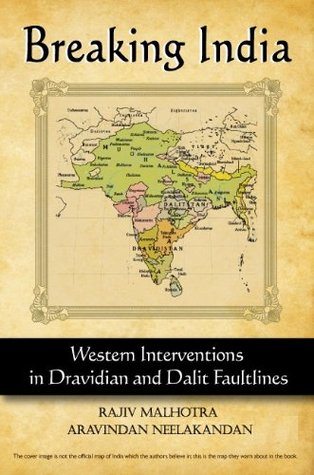More on this book
Community
Kindle Notes & Highlights
The Criminal Tribes Act was passed in 1871 and made it lawful to perform genocide against a list of Indian tribes who were deemed to be 'criminals', including every member of these tribes right from birth. Many tribes were condemned not because they were 'criminal' (even if there is such a thing as a whole tribe being criminal), but because they were fighting against the British destruction of their jungles and other habitats. The Thugs were one such group that got so badly maligned via atrocity literature that their name has entered the English language as being synonymous with criminals.
The book shows how the dowry extortions that have become so common in middle-class India today, were actually started when women's traditional property rights were taken away by the British through convoluted logic.
Claims of atrocities against workers were used to outlaw various Indian industries, including textiles and steelmaking, in which India had a lead over Britain.
In parallel, the Church evangelists working in South India constructed a Dravidian race identity. They de-linked Tamil culture from its pan-Indian cultural matrix, and claimed that its spirituality was closer to Christianity than to the Aryan North Indian culture.
The Sanskrit language . . . is of a wonderful structure; more perfect than the Greek, more copious than the Latin, and more exquisitely refined than either, yet bearing to both of them a stronger affinity . . . than could possibly have been produced by accident.1
The 1789 English translation of Kalidasa's Shakuntala by William Jones was retranslated into German in 1791, and influenced many prominent intellectuals such as Herder, Goethe, and Schiller.
Once the Indian texts had been mined for their treasures, and these had been processed through translations, mistranslations, plagiarism, rejections, and extrapolations, and Indian knowledge had been securely relocated as 'Western', the Indian source lost its earlier glamour.
The Bible's Hamitic myth, in which the descendants of Ham were cursed by Noah into perpetual slavery, was used by the Europeans as the established truth to interpret the skincolor of Blacks and justify the institution of slavery.
If something was mentioned in Sanskrit texts that somehow did not fit into the Bible, it was labeled as mythology. Whatever could be made to 'fit', became the history of the Indian peoples according to Jones. In this manner, the Vedic and Puranic texts were digested into Biblical chronology. This Bible-centric framework of timescales is what led Max Müller many decades later to establish his dates for the socalled Aryan invasion of India, which influences scholars to this day.
Prior to colonialism, the jati-varna system in India had little, if anything, to do with race, ethnicity, or genetics. It was better understood as a set of distinctions based on traditional or inherited social status derived from work roles.
To this day, Indian society's legal framework is Risley's creation, and his taxonomy of India's communities dominates today's caste wars and shapes Indian politics.
Caldwell essentialized the Dravidians by constructing their racial 'others' as Brahmins. He claimed that Sanskrit was read in the South only by 'the descendents of those Brahminical colonialists'.
Through this manipulation, the Brahmins were made into the colonizers while the actual colonizers like Caldwell were projected as saviors of the Tamil people!
Fritjof Capra, who wrote: 'For the modern physicists, then, Shiva's dance is the dance of subatomic matter'.
astrophysicist Carl Sagan saw in the image of Siva 'a kind of premonition of modern astronomical ideas'.
two major differences that we cannot overlook. Hinduism is liberal and will accept anything 'good' as sacred. Christianity, on the other hand, is based on a 'zealous' God who commands you cannot worship any other gods. Christian form of worship is simplicity; that is why you see Christians dressed in white when they go to church. But a Hindu devotee believes in elaboration in worship. The more you beautify, the more acceptable! So where does one bring in Bharathanatyam? It is not an easy task to merge the two worlds.


